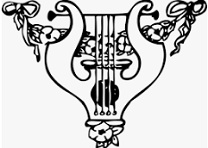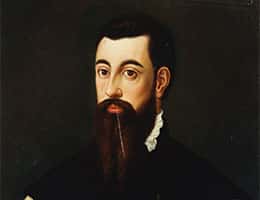 A lyre is a stringed musical instrument that was used in ancient times. The concept comes from the Latin word lyra , in turn from the Greek lýra .
A lyre is a stringed musical instrument that was used in ancient times. The concept comes from the Latin word lyra , in turn from the Greek lýra .
The lyre featured between three and eighteen taut strings that fit into a frame. The musicians played them with both hands to generate the sound, just as is done with the harp .
Greek mythology indicates that Hermes was the creator of the lyre and that Orpheus was in charge of carving it. Apollo , on the other hand, is usually depicted with a lyre in his hand. This instrument appears throughout history linked to troubadours and poets.
The harp is one of the instruments considered to derive from the lyre. Other well-known examples are the lute , the zither , and even the guitar .
Beyond music , there are other meanings of the term lyre. This is what different currencies were called worldwide.
The Italian lira , for example, was in force in Italy between 1861 and 2002, when it was replaced by the euro. In its last three years of existence, in fact, both currencies coexisted.
The San Marino lira , meanwhile, was the currency of San Marino from 1865 to 2002. The value of this currency was tied to the value of the Italian lira. The same can be said of the Vatican lira (of Vatican City ). These three liras were legal tender in these three nations.
The Israeli lira (1948-1980) and the Maltese lira (1972-2007) are other liras that are no longer in use. On the other hand, the Turkish lira remains valid .
In the field of poetry , the lyre is a type of stanza that is made up of five verses. It is found in both the Italian and Spanish meters and is divided into three heptasyllable verses and two hendecasyllables , that is, three of seven syllables and two of eleven , respectively. The arrangement of the verses throughout the stanza is as follows: 7a, 11B, 7a, 7b, 11B .
The first example of the lyre that is often mentioned is the work Amori by the Italian poet Bernardo Tasso , published in 1534. One of his friends, the celebrated Golden Age writer Garcilaso de la Vega , was the one who introduced the lyre into literature. Spanish.
 In the following excerpt from one of his poems we can see the term "lyre" in the first verse:
In the following excerpt from one of his poems we can see the term "lyre" in the first verse:
«If from my low lira
so much could the sound that in a moment
appease the anger
of the brave wind
and the fury of the sea and the movement..."
This is a stanza of great importance for the history of Spanish literature, since, although Garcilaso used it only once, the Spanish poet Fray Luis de León used it many times in his Horatian odes , although he also used different combinations. of heptasyllables and hendecasyllables which he called the same way.
The religious dedicated to mystical poetry named San Juan de la Cruz , who studied with Fray Luis de León in Salamanca, elevated the lyre to another level, considered by some experts the highest. Later, many writers began to use it normally, although they have not always prioritized it over other types of stanzas .
Juan Antonio Villacañas , another Toledo poet, brought the lyre into a new era in the 20th century, through the renewal of its content . To distinguish them from the others, their lyres are called sanjuaninas . In the Portuguese language, the writer Luís Vaz de Camoens used it in several of his most important odes throughout the period known as Mannerism .
